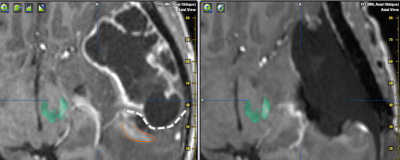CNS Tumors
CNS Tumors
Weekend Course
Weekend Course
ORGANIZERS: Meiyun Wang, Christopher Hess
Sunday, 12 May 2019
| Room 516C-E | 13:30 - 16:55 | Moderators: Kei Yamada, Ovidiu Andronesi |
Skill Level: Basic to Advanced
Session Number: WE-26
Overview
This session is focused on clinical imaging of brain and spinal cord tumors. The basic and state-of-the-art MR findings for diagnosis and treatment guidance of CNS tumors will be presented and discussed.
Target Audience
Neuroradiologists, neurooncologists, neurosurgeons, medical physicists, and imaging scientists at various levels will benefit from participating in this session.
Educational Objectives
As a result of attending this course, participants should be able to:
- Interpret existing clinical radiological classification and MRI findings for the diagnosis and monitoring of brain and spinal cord tumors;
- Describe advanced functional and molecular MR techniques for tumor physiology, metabolism, and biological behaviour; and
- Evaluate radiomics based on big data for the detection and stage of brain tumor.
Overview
This session is focused on clinical imaging of brain and spinal cord tumors. The basic and state-of-the-art MR findings for diagnosis and treatment guidance of CNS tumors will be presented and discussed.
Target Audience
Neuroradiologists, neurooncologists, neurosurgeons, medical physicists, and imaging scientists at various levels will benefit from participating in this session.
Educational Objectives
As a result of attending this course, participants should be able to:
- Interpret existing clinical radiological classification and MRI findings for the diagnosis and monitoring of brain and spinal cord tumors;
- Describe advanced functional and molecular MR techniques for tumor physiology, metabolism, and biological behaviour; and
- Evaluate radiomics based on big data for the detection and stage of brain tumor.
| 13:30 |
 |
The WHO 2016 Classification of Brain Tumors Video Permission Withheld
Ulrike Löbel
Major restructuring occurred in the 2016 classification of brain tumors. All diffuse astrocytic and oligodendroglial tumors are now grouped together and oligodendrogliomas are defined by a 1p/19q-codeletion. The new entity of diffuse midline glioma predominates in children and is characterized by a very poor outcome. Within the group of embryonal tumors, the current classification defined medulloblastoma WNT–activated and medulloblastoma SHH–activated as tumor entities and the new entity of embryonal tumour with multilayered rosettes (ETMR), C19MC-altered was defined. On the other hand, the term primitive neuroectodermal tumor (PNET) was removed from the tumor classification.
|
| 13:55 |
 |
Use of Intraoperative MRI for Improvement of Neurosurgical Intervention
Akira Matsumura, Hiroyoshi Akutsu, Yosuke Masuda, Tomohiko Masumoto, Masahide Matsuda, Eiichi Ishikawa
Intraoperative MRI (i-MRI) is a powerful tool in improving the surgical intervention for brain and skull base surgery. We would like to share our experience of tha advantage of using i-MRI for better treatmet results.
|
| 14:20 |
Spinal Cord Tumors Video Permission Withheld
Carlos Torres
|
|
| 14:45 |
Break & Meet the Teachers | |
| 15:15 |
Pediatric Tumors
Benita Tamrazi
Advanced imaging of pediatric brain tumors will be discussed with emphasis on clinical scenarios.
|
|
| 15:35 |
Self Assessment Module (SAM) | |
| 15:40 |
Radiomics in Gliomas
Yoon Seong Choi
|
|
| 16:05 |
Molecular Imaging
Georges El Fakhri
|
|
| 16:30 |
Tumor Therapy
Marco Essig
Brain tumours are among the top causes of cancer related deaths both in Europe and North America. The goals and requirements for neuroimaging in brain tumours are multiplex and involve making a diagnosis and a differential diagnosis, while accurate lesion grading is needed in the case of the overall patient management. Imaging is also involved in the decision-making process for therapy and later for precise planning of surgical or radio-therapeutic interventions. After therapy neuroimaging techniques have shown to be mandatory for monitoring of disease and detection as well as management of possible therapy related side effects.
|
|
| 16:55 |
Adjournment & Meet the Teachers |
 Back to Program-at-a-Glance |
Back to Program-at-a-Glance |  Back to Top
Back to Top